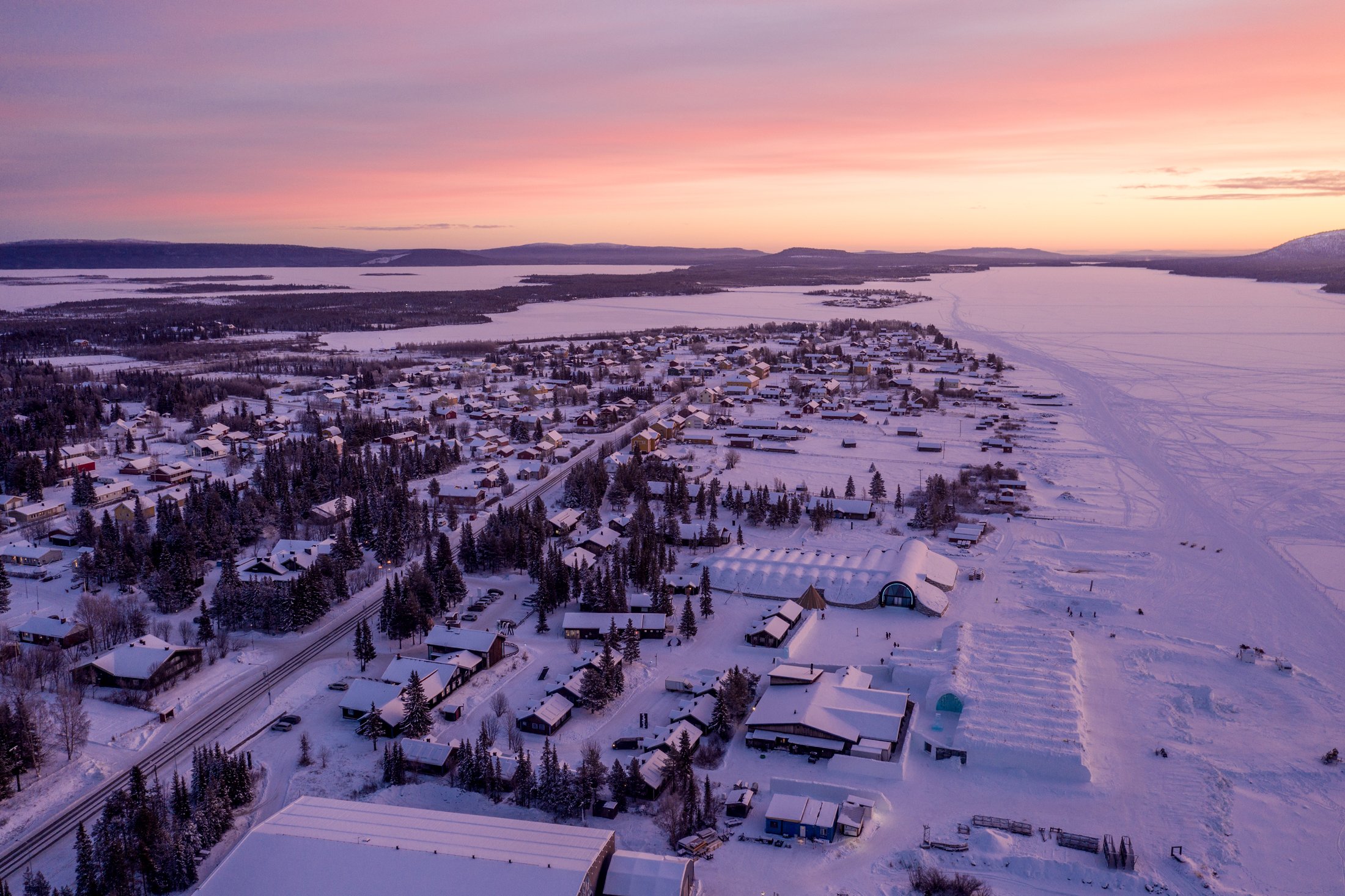
how to dress
When you visit us at ICEHOTEL, you want to enjoy your Arctic experience without being cold. The right equipment is an important part of your preparations before your holiday in Kiruna.
We ensure you stay warm when you visit us in winter, by lending you high-quality outerwear, including snowmobile overalls, warm boots, and gloves. The perfect gear for exciting adventures like snowmobile safaris, dog sledding, or simply enjoying the magical northern lights over Lapland.
We recommend wearing a wool base layer closest to your body that keeps you dry and warm. Add a breathable mid-layer (such as a fleece sweater), several pairs of thick wool socks (avoid cotton and synthetics), and a cozy hat to protect your head from the cold.
Dressing for the Arctic cold is crucial, as temperatures can drop to minus 30 degrees – at ICEHOTEL our knowledgeable staff will help you with any questions about equipment and clothing.

sleeping on ice
Sleeping in one of ICEHOTEL's incredible rooms built from snow and ice is a memory for life – we make sure you stay warm and comfortable all night.
The temperature inside the hotel is around minus five degrees. When you stay with us, you'll be provided with a cozy sleeping bag designed for temperatures down to minus 25 degrees. To keep warm and ensure a good night's sleep, we recommend wearing a wool base layer, wool socks, and a warm hat when you get ready for the night. If you tend to get cold, an extra thick sweater can help you sleep soundly all night long.
Warm hands and head
A good hat is vital in the Arctic cold. It should not only protect your head but also keep your ears and neck warm. When it comes to gloves, they should protect and provide enough freedom of movement, as that generates heat and keeps your hands comfortable.
Wool socks and large shoes – a must for avoiding cold feet
Wool is the best material for socks in cold temperatures. Wool keeps you warm even when damp, making it perfect for your Arctic winter adventure. Invest in several pairs of wool socks for maximum comfort and warmth.
Choose shoes that are a bit larger than your regular size, so there's room for thick socks or insoles. The extra space will help keep your feet warmer for longer. Changing socks and mittens a few times during the day also helps maintain warmth.
Work from the inside out
The innermost layer close to your skin should transport moisture efficiently. Choose materials like synthetics, wool, or a wool blend for the best results. Fleece is an excellent mid-layer, and if it's windproof, it keeps the cold out even better.
The outer layer of your clothing should protect against wind and water while allowing excess heat and moisture to escape. When it's really cold, it's a good idea to have an extra down jacket or a thick fleece or wool sweater as an additional warm layer.

Dress for the adventure
To fully enjoy your Arctic experience, it's best to dress in several layers that breathe and keep you dry. Loose clothing helps circulate body heat, creating an even and comfortable warmth. Choose breathable materials, such as wool or synthetics, and avoid dressing too warmly to prevent sweating – sweat cools the body down.
Use oil-based creams on your skin and skip the morning shower when preparing for a day of outdoor activities.

Unsure about your gear?
Contact us at ICEHOTEL, and we'll help you find the right clothes for your winter adventure in Kiruna. In our shop, you can buy base layers, hats, and wool socks.
With the right clothing, you can enjoy your Arctic experience without freezing – at ICEHOTEL, our knowledgeable staff is always here to ensure a warm and exciting experience.


